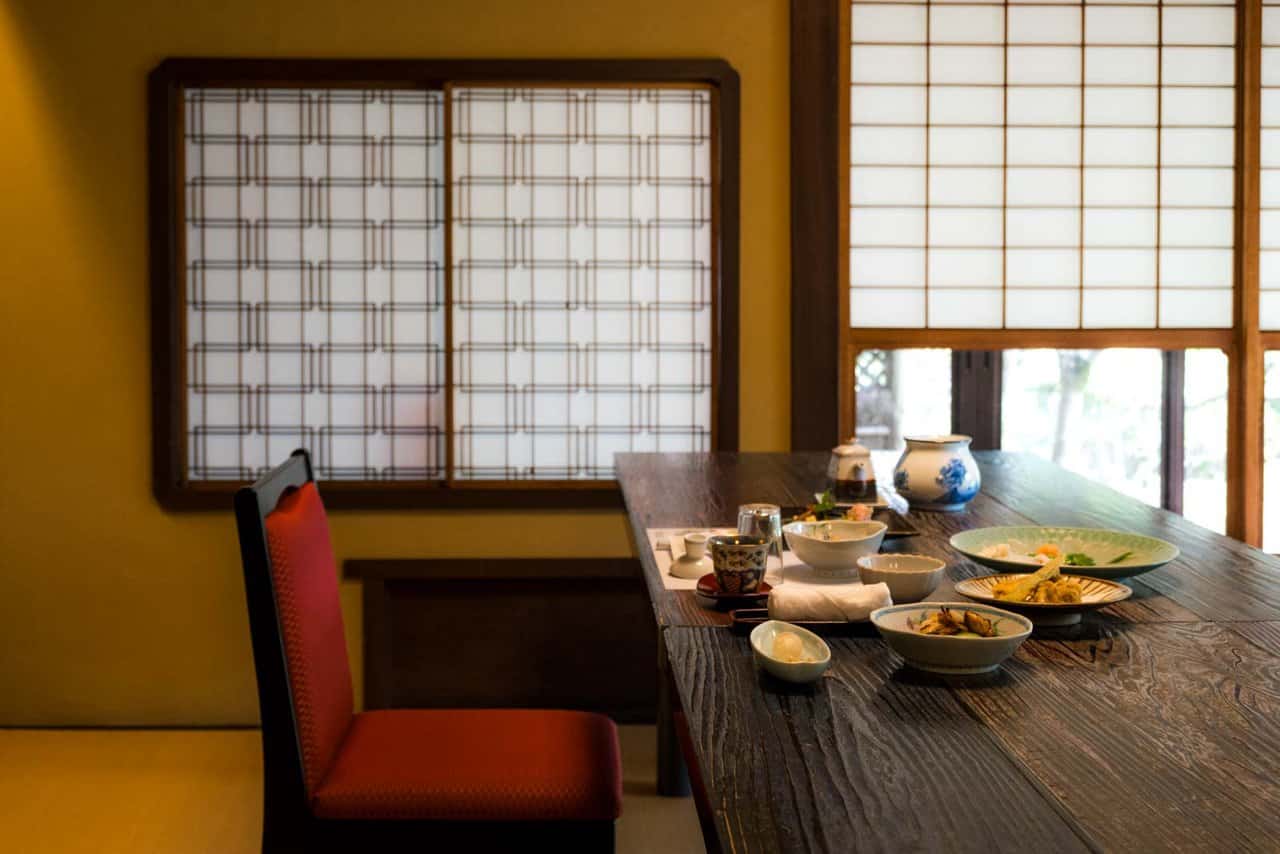Picture yourself in a time machine, traveling 400 years ago to the Edo era in Japan. You find yourself in the presence of Lord Inaba, the feudal lord of the Usuki domain in present-day Oita Prefecture, who has just popped a mouth-watering treat into his mouth — the Usuki ginger cracker. As you journey with the lord during the Sankin-kotai (参覲交代) procession, a march of samurai lords making their annual trip to the shogunal capital, you can’t help but want to savor the taste of these preserved ginger treats yourself.
Fast-forward to the present day, and the Usuki’s gastronomical heritage is alive and well, with these ginger crackers and the city’s 400-year-old brewing tradition of miso, soy sauce, and sake, among many others, that has earned the city the coveted recognition of a UNESCO Creative City, and as a City of Gastronomy.
In this article, we visit three locations that have helped earn Usuki the UNESCO Creative City title. We’ll try making Usuki ginger treats, taste soy sauce ice cream, and even indulge in dishes that recreate the dishes eaten by feudal lords during the Edo period.
What is the UNESCO “City of Gastronomy”?
Before beginning our Usuki culinary journey, let’s talk about what makes a UNESCO “City of Gastronomy”. This coveted title is awarded to cities with an unparalleled passion for preserving and promoting their unique culinary traditions. Currently, there are more than 30 cities across the globe that have earned this prestigious recognition. And Usuki, with its centuries-old breweries and unchanged recipes, has rightfully earned a spot on this prestigious list.
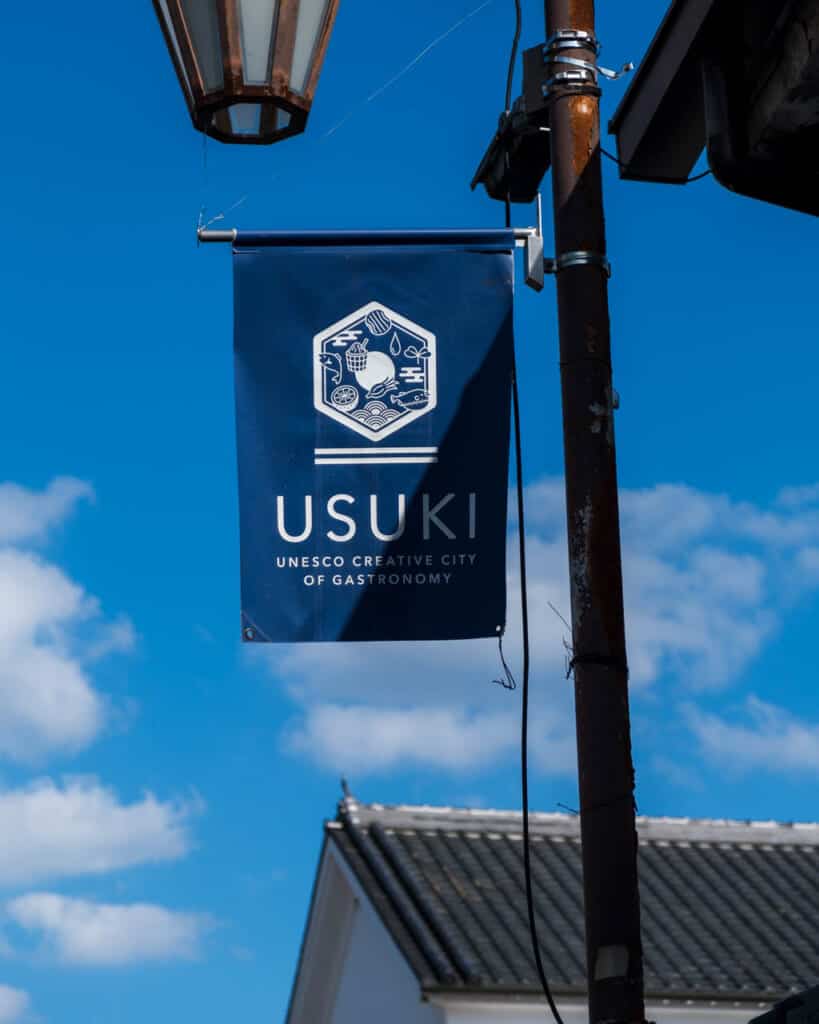
So, what makes Usuki so special? Nestled in a region with unique geography and topography, Usuki is a city that is known for its rich and abundant water. This natural resource has been the driving force behind a 400-year-old brewing industry, which has produced miso, soy sauce, and sake, and has played a significant role in the city’s innovative food preparation methods. Usuki’s food industry relies heavily on locally sourced and sustainable ingredients, making it a unique and incredible place to experience the rich cultural traditions of Japan.
Usuki is also blessed with warm weather and abundant nature, making it an ideal place to grow organic ginger. Although the current production volume of local ginger is less than it was, Usuki gained fame during the Meiji and Taisho eras as one of the largest collective cultivation areas for ginger, which is used in the popular Usuki ginger cracker.
With its rich culinary heritage, innovative food preparation methods, and commitment to sustainability, Usuki is undoubtedly a well-deserved recipient of the prestigious UNESCO title.
Three Places to Trace Usuki’s Samurai Food Culture
So, with that out of the way, here are three spots in Usuki City where you can experience Usuki, a UNESCO city of gastronomy.
Goto Seika: Make Your Own Ginger Cracker Workshop
The first spot on our list is Goto Seika Main Shop (後藤製菓 本店). Located next to the mysterious Usuki Stone Buddhas, designated national reasures, this is where you can not only eat but also go on a tour to see behind the scenes how the traditional Usuki ginger rice crackers are made.
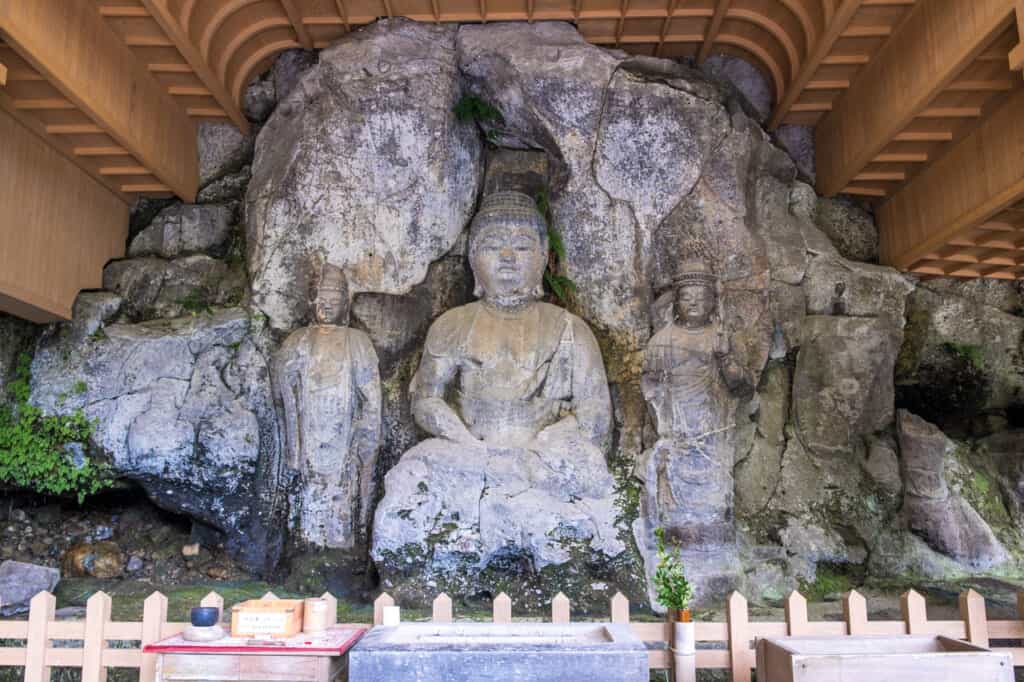
Founded in 1919, Goto Seika has been selling the famous Usuki Senbei ginger cracker for over 100 years. This traditional confectionery made mainly from wheat flour and ginger, is considered to be part of Usuki City’s food culture. In the past, it would be hard not to see this staple snack in every household!
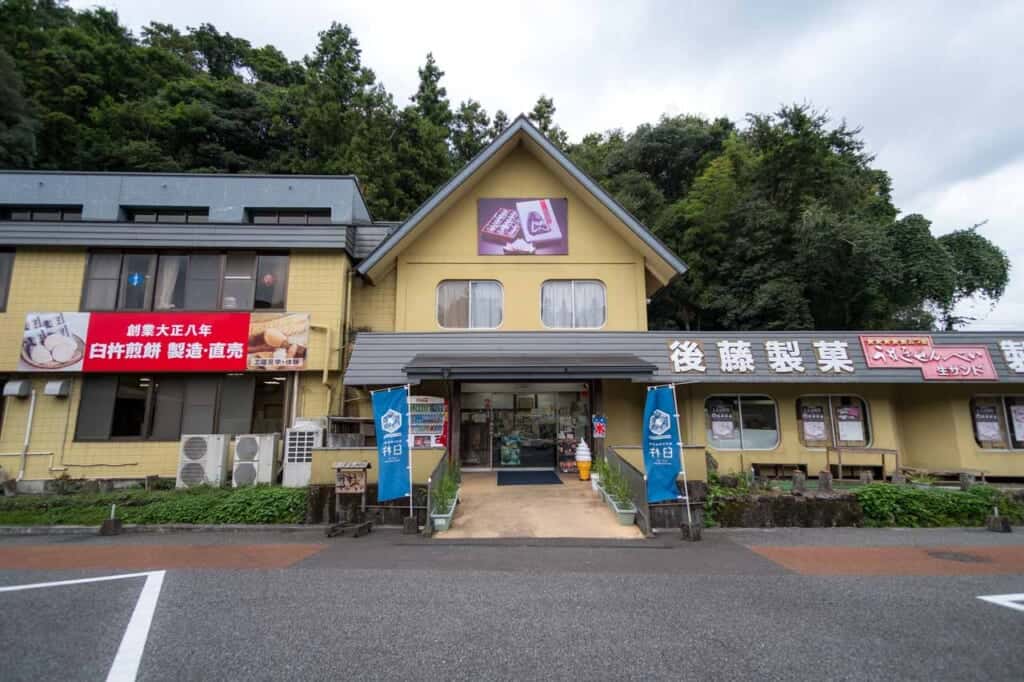
While Usuki Senbei were originally made from a blend of rice, barley, and millet, the recipe was changed to include wheat flour. And with Usuki being a major ginger producing region, it was only fitting that this delightful ingredient also found its way into these delicious crackers.
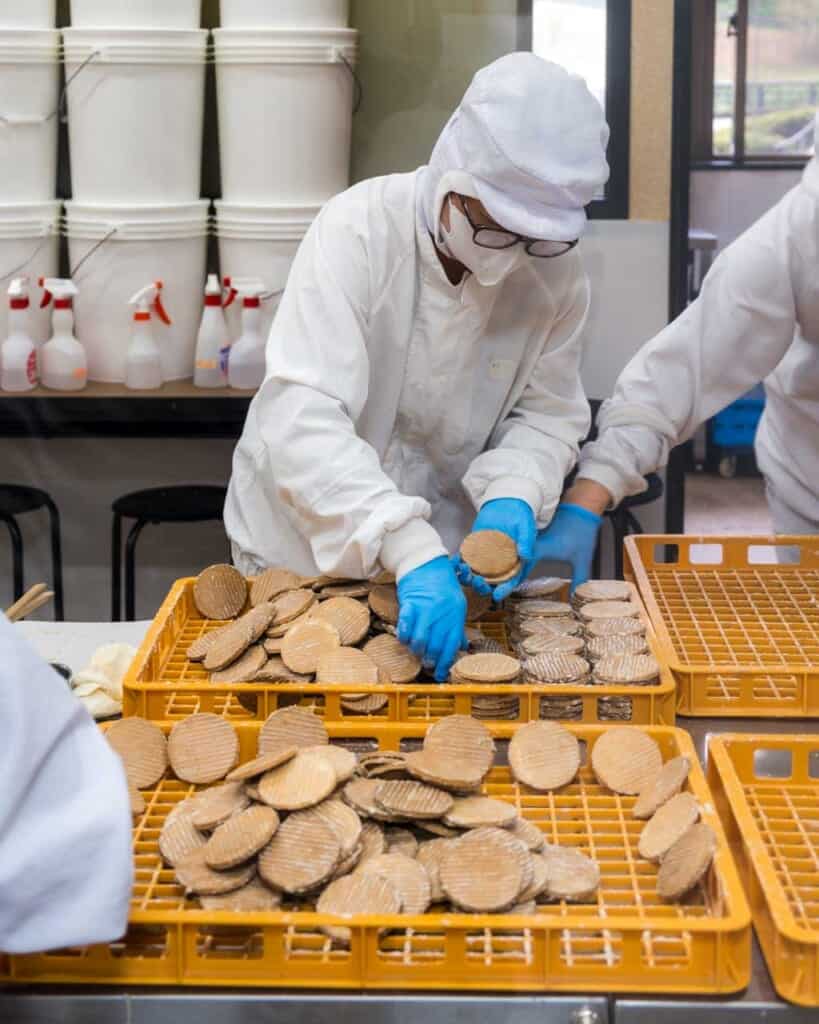
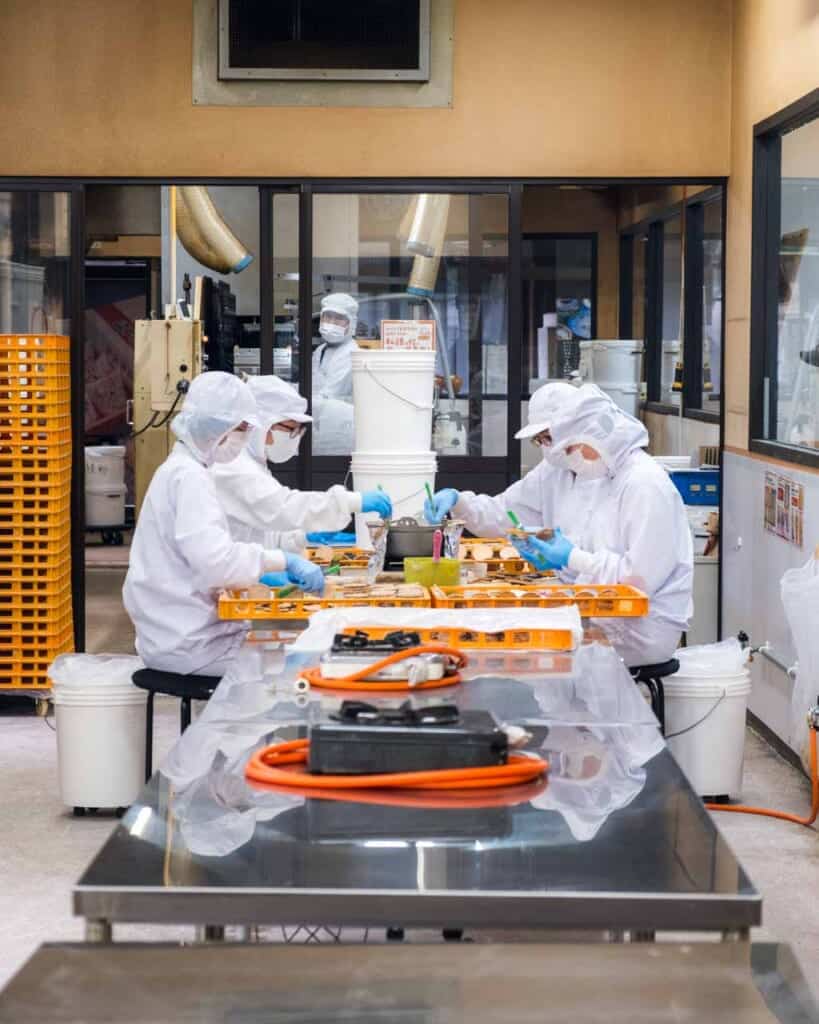
As you tour the factory, you will observe the confectioners moving quickly through trays of crackers, effortlessly and evenly distributing the sweet ginger syrup. If you’re planning to attend the Usuki ginger cracker workshop, be prepared to practice a little bit before you get the hang of it.
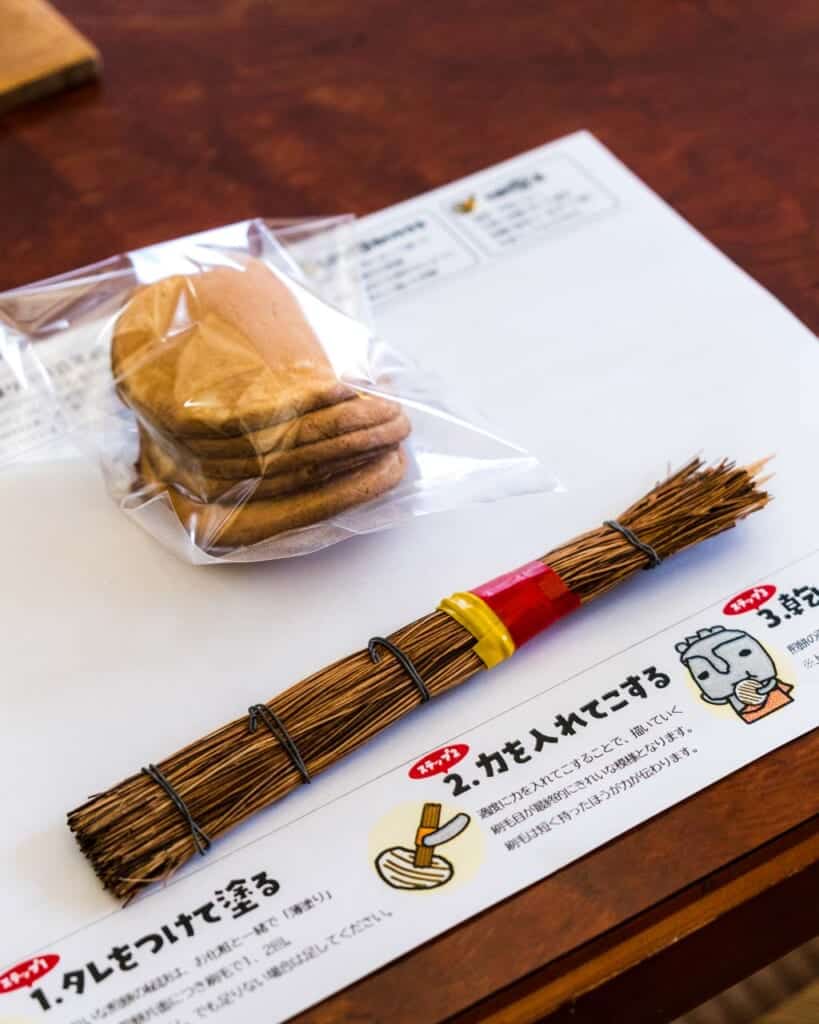
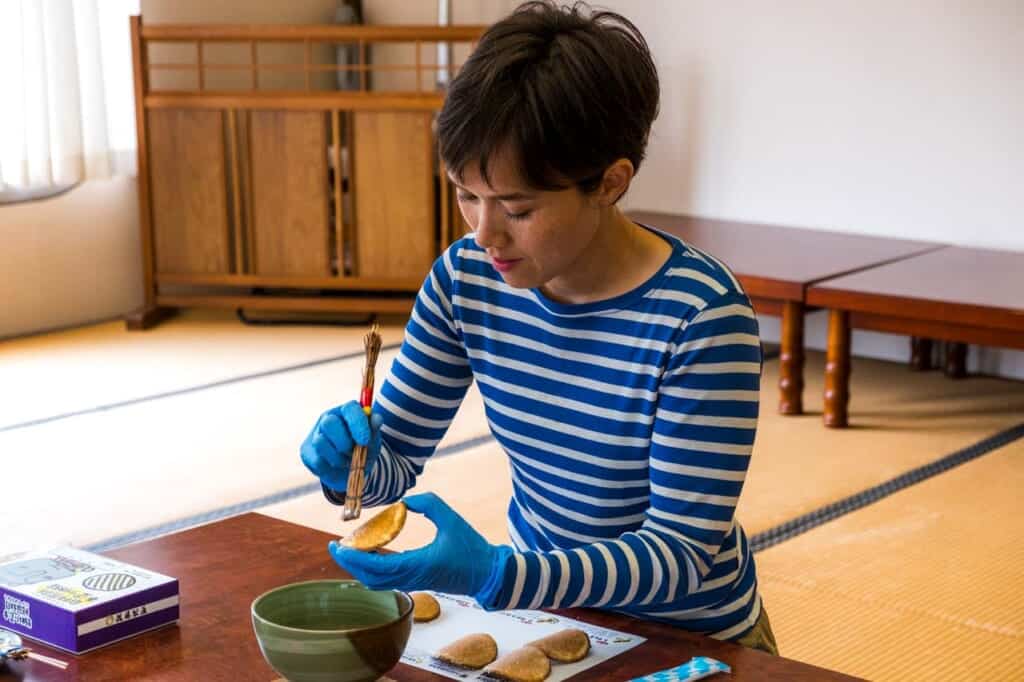
After you tour the factory, you’ll head upstairs, receiving a coarse brush to scrape hot ginger syrup onto your crackers. The goal is to create clear, distinct lines on the circular cracker, giving it its signature scraped look. The confectioners will guide you in this process, encouraging you to aim for something that looks like the moon as seen through a nawanoren (a string noren, a type of curtain made of rope hung in a doorway).
Once you get the hang of it, you can create your delicious hand-made souvenir, which you can take home in a box with your name. To participate in this workshop, you must reserve a spot up to three days in advance. You can do this directly from their website or through Jalan. The workshop is priced at 880 JPY.
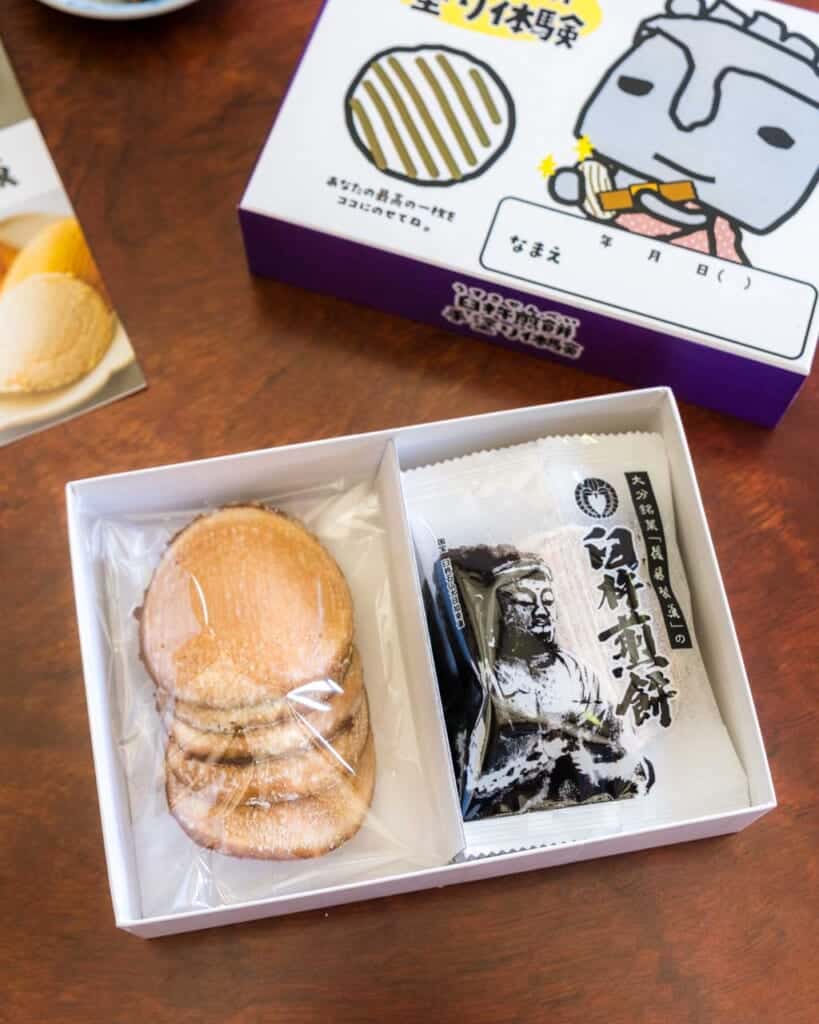
You’ll find various ginger products in the shop, including ginger soft cream, hot ginger drinks, and ginger powder made from unused ginger pulp. You can also try other spin-offs of the cracker, such as the chocolate-covered ginger crackers, the “Usuki Senbei Namasand,” a soft rice cracker filled with ginger and sandwiched with ogura bean paste, matcha bean paste, and blueberry jam. Yum!
KIRAKU-AN: Eat as the Samurai Did 400 Years Ago
How many times can you honestly say you’ve eaten authentic samurai cuisine? Well, you can do just that in Usuki! For lunch, head to Kiraku-an (喜楽庵), famous for serving Honzen cuisine (Honzen-ryori), a type of ritualized way of serving food on legged trays.
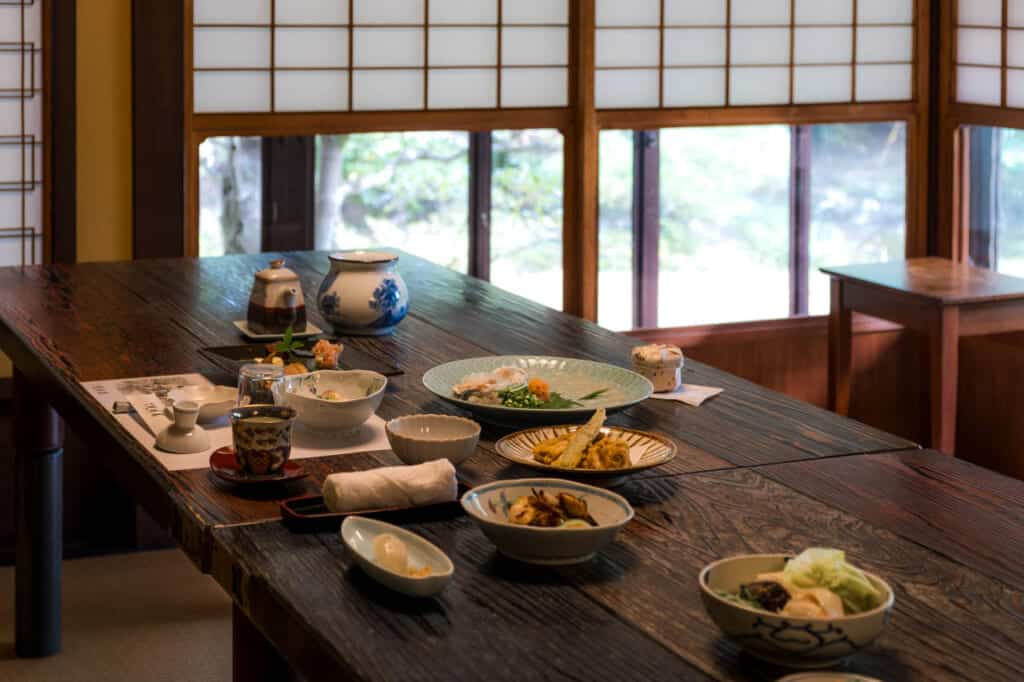
The Inaba clan’s feudal lords used Kiraku-an’s Honzen cuisine to accompany all of their important ceremonies. Since 1945, this restaurant has been serving this specialized, exclusive cuisine that uses carefully selected ingredients from Usuki. Kiraku-an is believed to be one of the few traditional Japanese restaurants in the country that serves samurai Honzen cuisine.
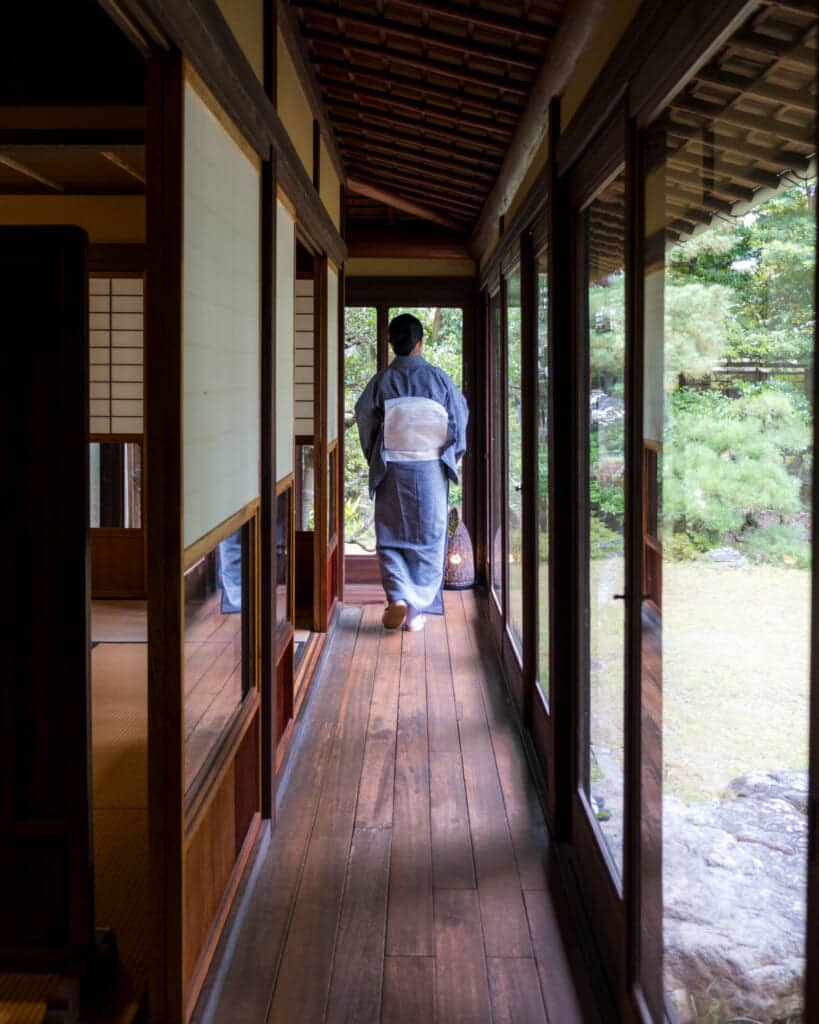
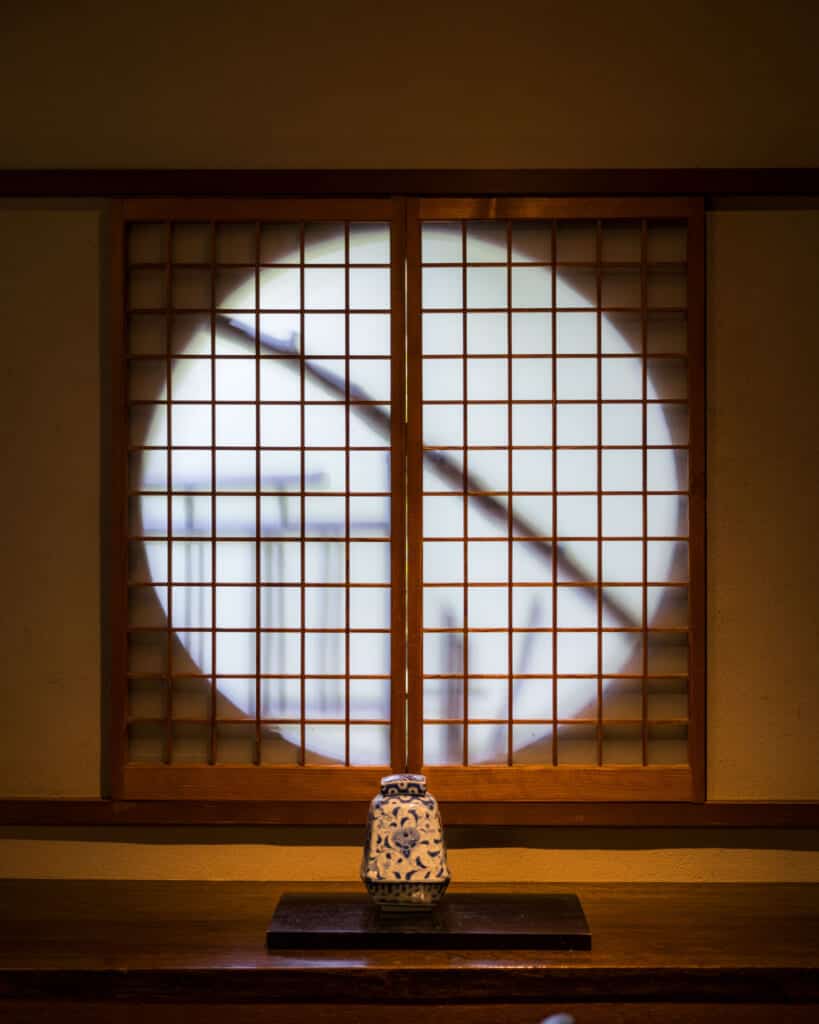
If you’re looking for a budget-friendly version of the samurai Honzen cuisine at Kiraku-an, you can enjoy the Kaiseki cuisine experience, which follows the style of samurai Honzen cuisine and can be found throughout the country. Among the specialties that Kiraku-an offers is Usuki’s blowfish, or fugu, which is unique to Usuki. Fugu is typically left to rest overnight to soften before being made into sashimi, but Usuki fugu is left for a short period of time before being eaten, making it fresher than most other fugu!
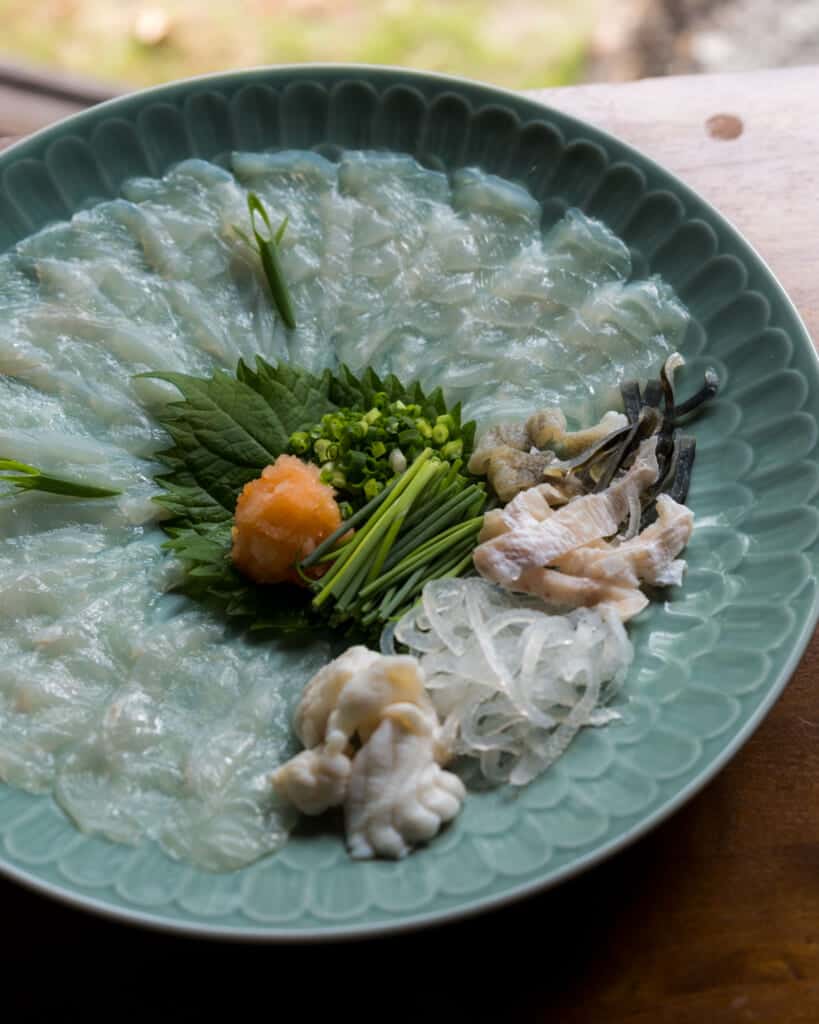
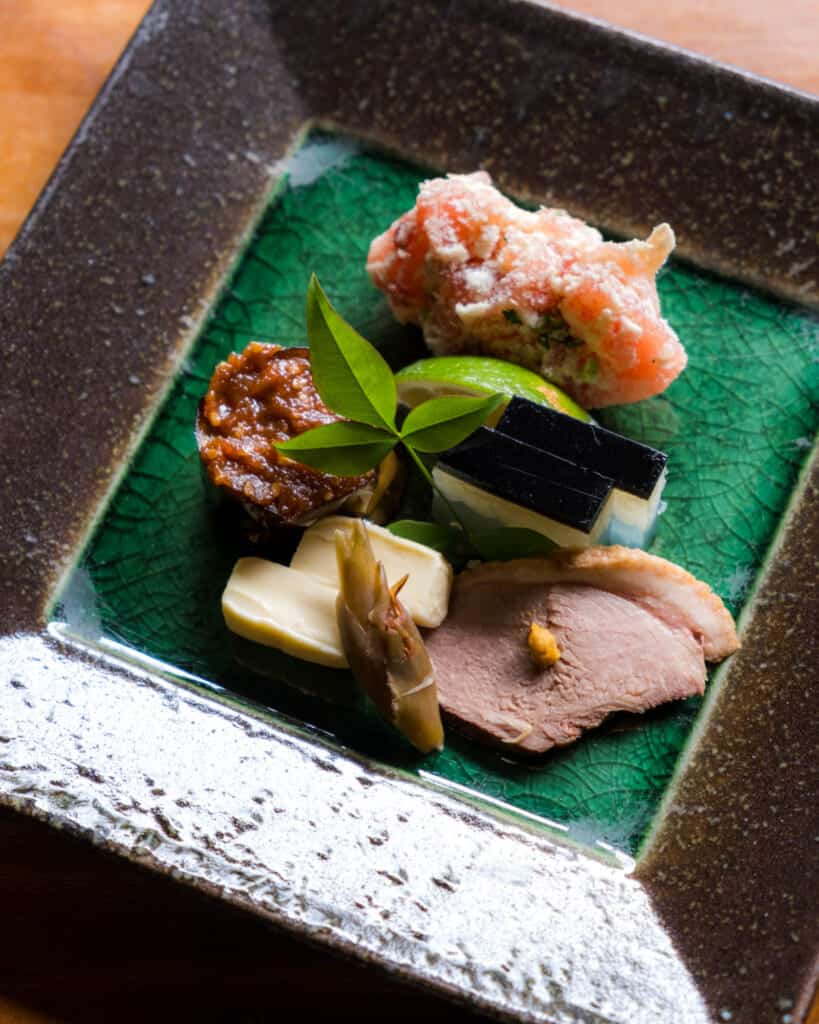
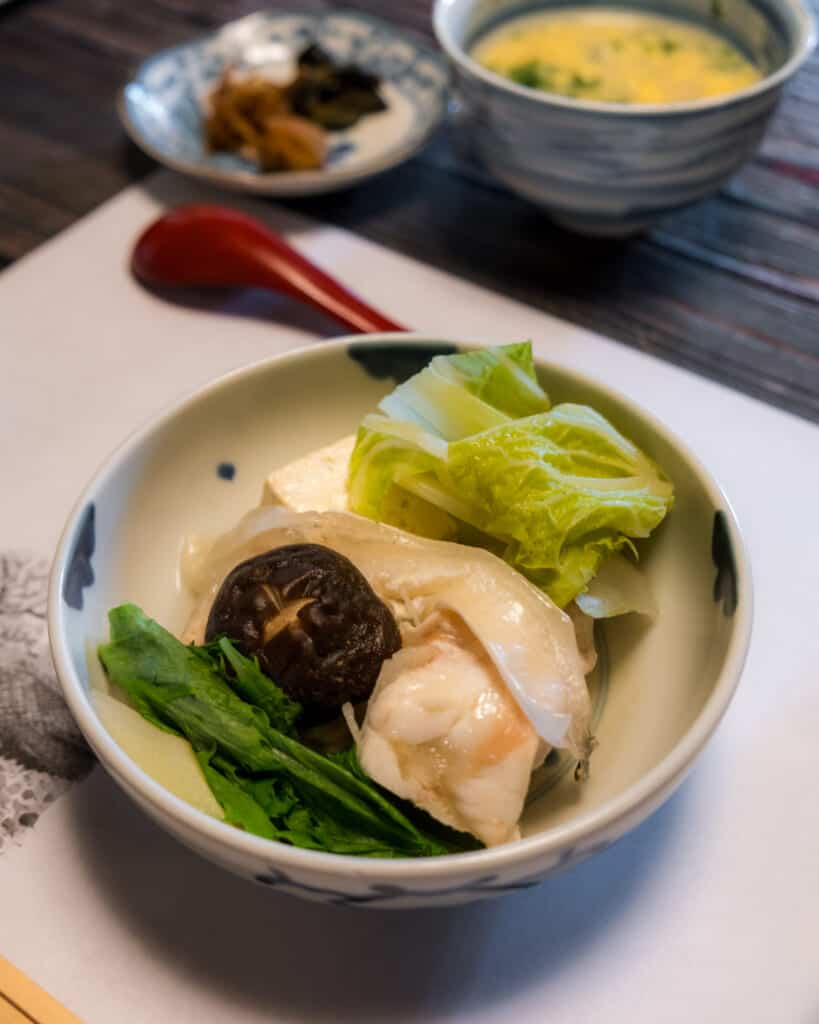
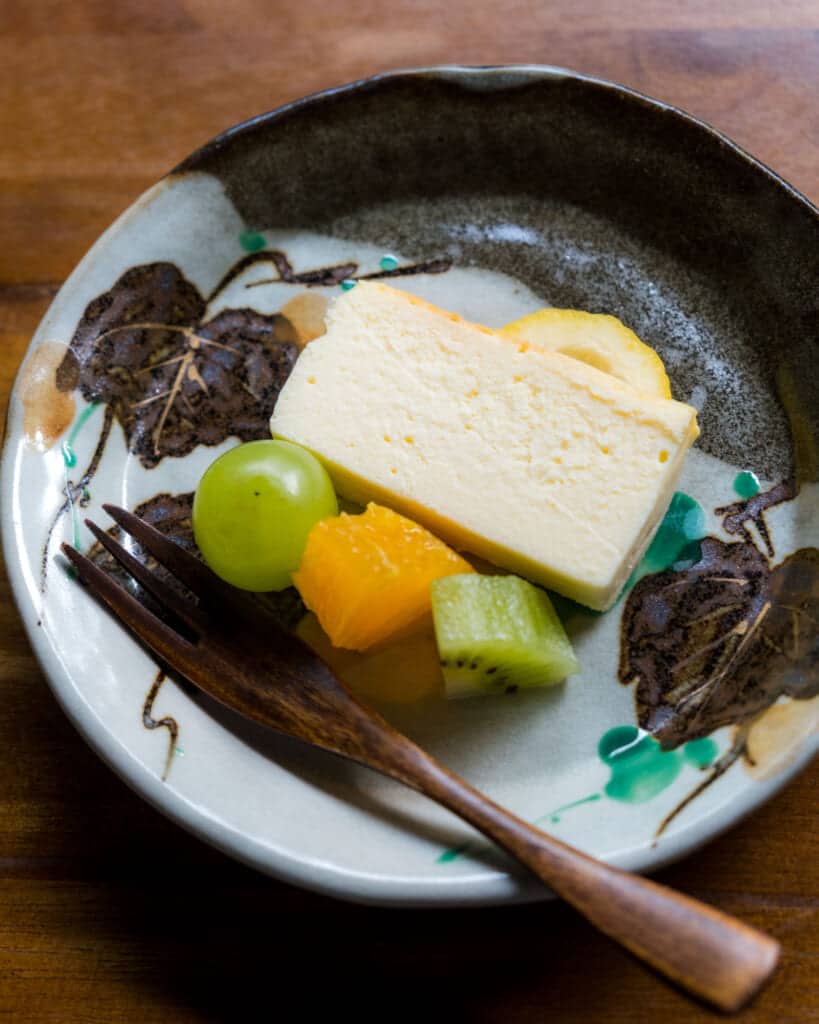
During my visit to Kiraku-an, I also tried Usuki’s local kirasumameshi. This dish combines soy sauce and kabosu citrus infused into fish and okara (leftover pulp from tofu and soy drink production). And yet another local favorite, cream cheese made from sake lees alone would have been enough to have me coming back for more.
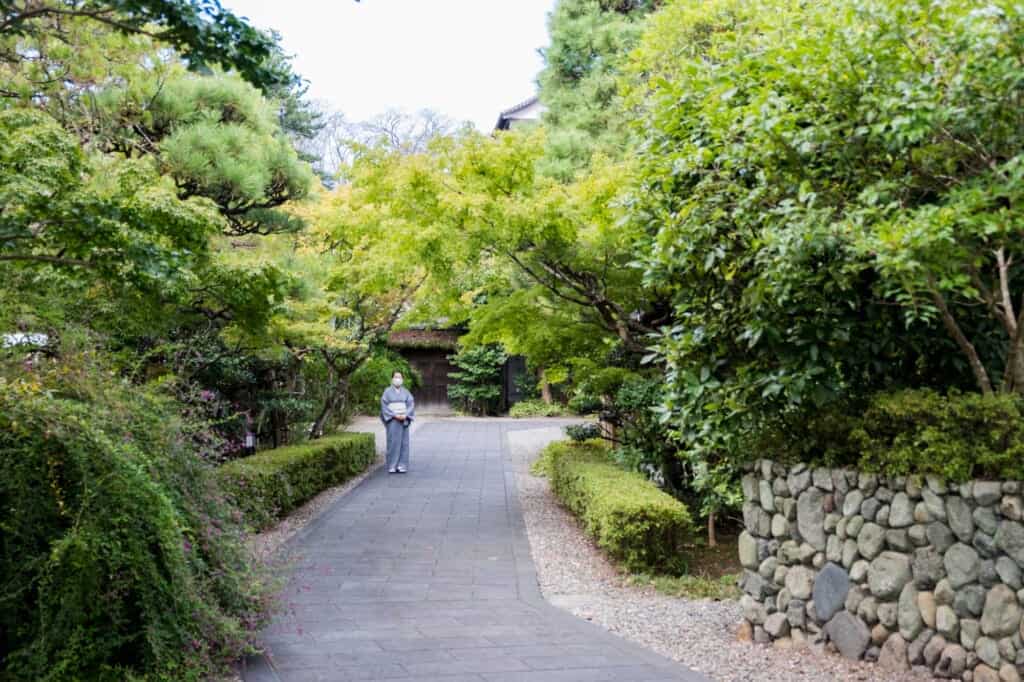
As I enjoyed my meal, I couldn’t help but marvel at the beauty of the architecture and garden. The Kiraku-an building, originally an Ogiya Villa, holds onto the charm and atmosphere of the early Taisho period. Every room in this traditional Japanese restaurant offers a stunning view of the garden, which adds a sense of history and tradition to the dining experience.
Fujiya Jinbei: Soy Sauce Ice Cream, Miso, and More
If you think soy sauce ice cream is a strange idea, we would say don’t knock it until you’ve tried it! In Usuki’s historic samurai residential area, you can find Fujiya Jinbei (富士屋甚兵衛), a soy sauce and miso company located on the charming Shopping Street (Haccho Oji).
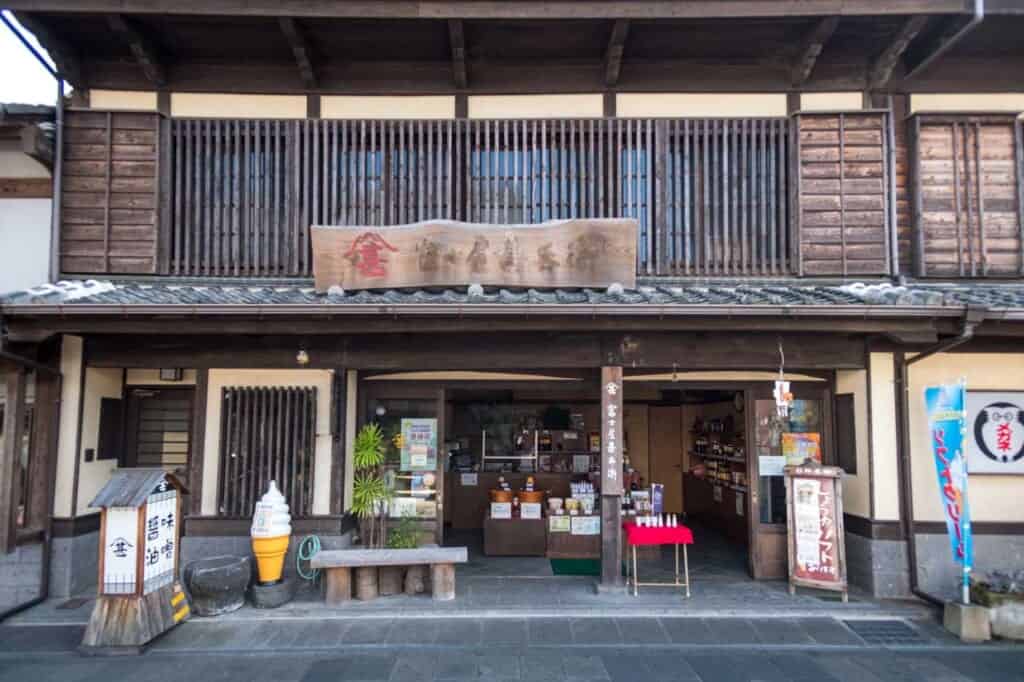
This brewery is known for its unique miso and soy sauce products that you can only find here, all of which sport the “Fujiya Jinbei” logo. They also sell standard miso and Bungo red miso, both made from domestic ingredients and sold by weight. They also sell awase miso (a blend of three types of miso including rice, barley, soybean miso) and barley miso.
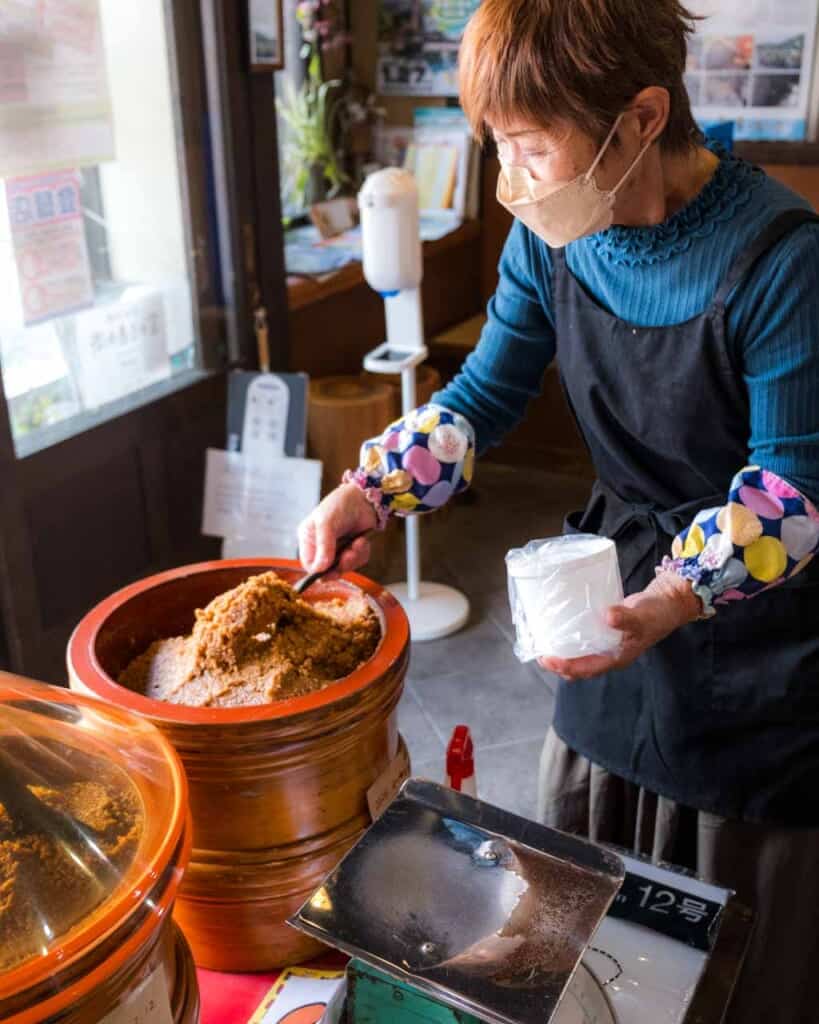
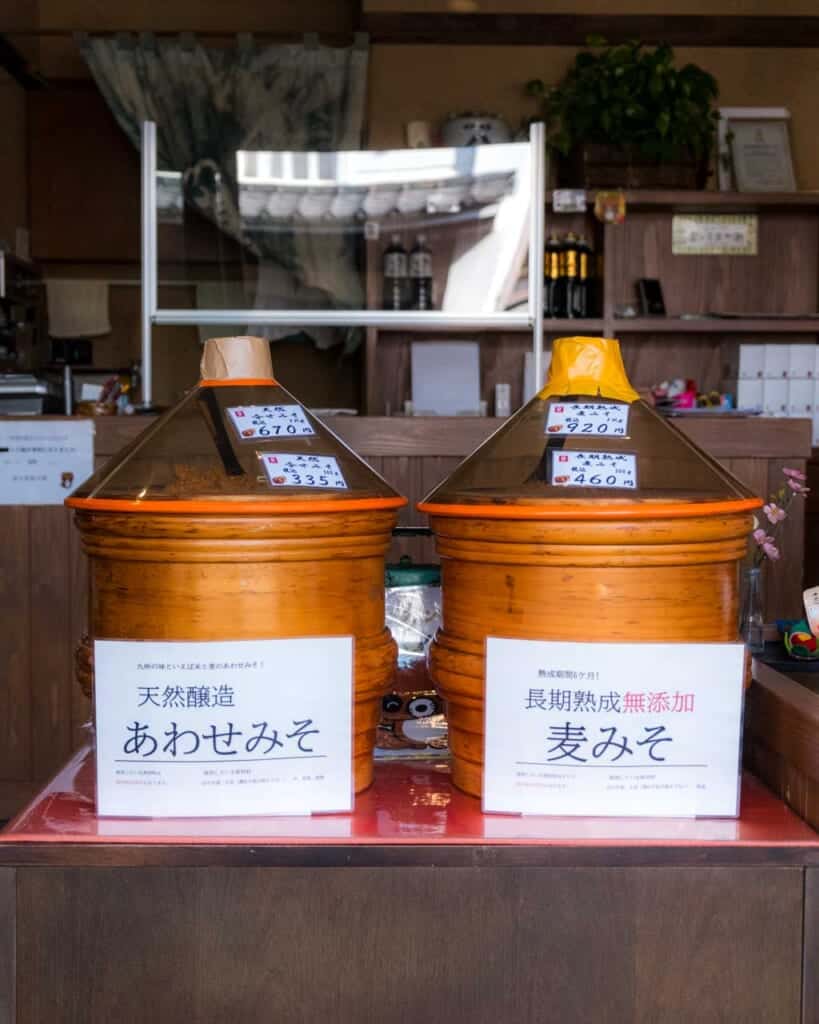
Usuki’s natural resources and water helped establish its 400-year-old brewing tradition and production of soy sauce and miso. Jinshichi Watanabe founded Fujiya in 1883 to create delicious soy sauce and miso, and the company continues to use traditional techniques that have been around for over 100 years to maintain the same nostalgic and unchanging flavors.
Fujiya Jinbei has some items that you can only buy here, such as their skipjack bonito-infused soy sauce or sweet soy sauce that tastes great drizzled over ice cream!
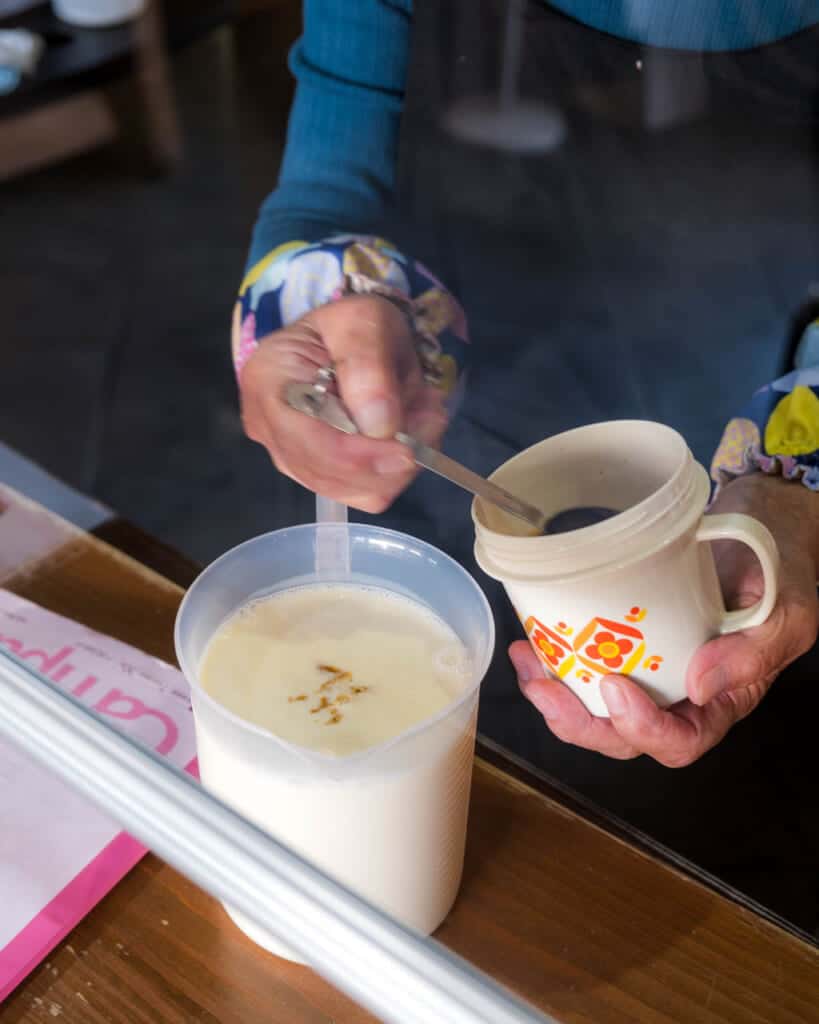
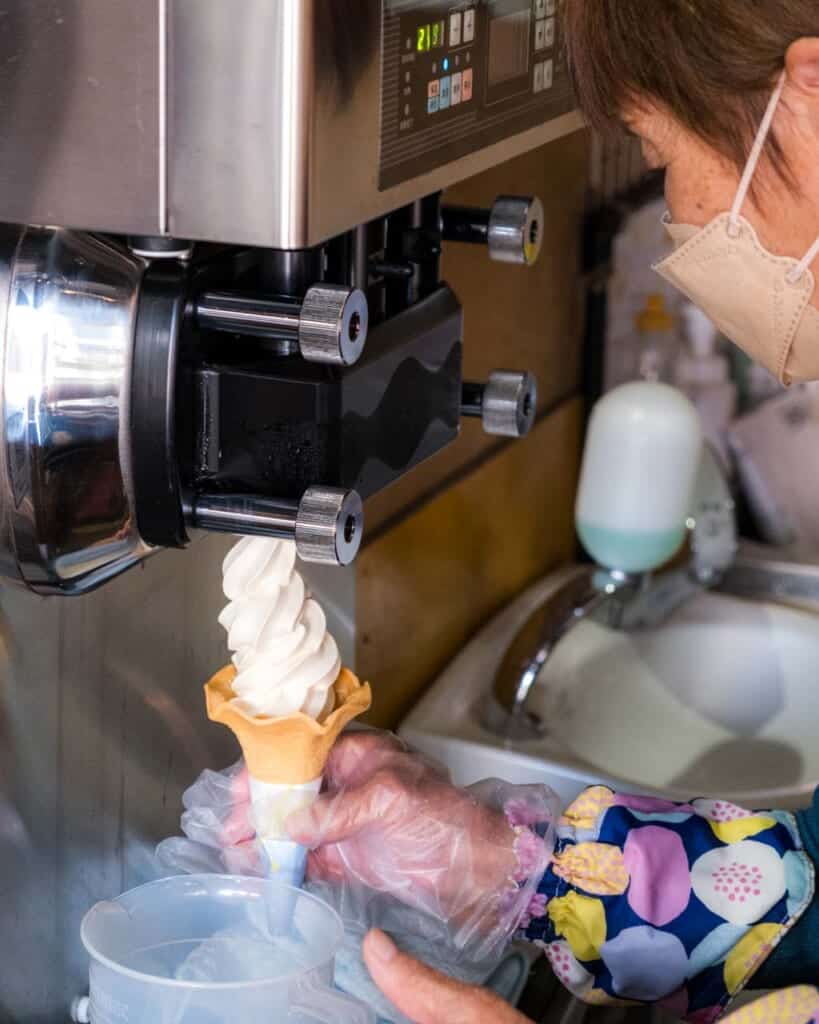
Don’t leave without trying their soy sauce soft serve, which is a must-try no matter the season. Add a few drops of katsuo-based soy sauce to vanilla soft serve for a subtle flavor with a caramel-like umami flavor that makes this creamy soft-serve ice cream a real treat!
While in Usuki, take a stroll through the Historic Nioza Road’s stone-paved streets lined with samurai houses and visit Usuki Castle, which is only a short walk away.
How to Get to Usuki in Oita Prefecture
If you are traveling by air, the nearest airport is Oita Airport. Once you arrive at the airport, you can take the airport express bus “Airliner” to Oita Station, then take the JR Nippo Main Line to Usuki Station (30 minutes on the limited express train).
For the ginger cracker workshop, take a bus from the Usuki Eki bus stop to the Usuki Sekibutsu bus stop (20 minutes) and walk 3 minutes to reach Usuki Stone Buddhas and Goto Seika main shop.
Discover the magic of Usuki City’s local dishes, where every bite is infused with rich history, symbolism, and cultural heritage. Join food enthusiasts from across the globe in savoring the unique culinary experience offered by this city and experience firsthand why it has earned the title of the Creative City of Food Culture. Embark on an extraordinary culinary adventure as you explore Usuki and discover the vibrant tapestry of cultural heritage through its food!
Sponsored by: Tourism Oita


